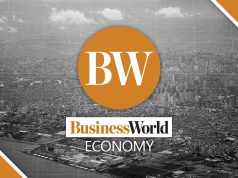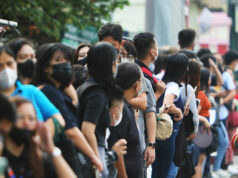Unmarked fuel subject to seizure after February deadline, BoC says
FULL compliance with the fuel marking program is expected by February, with oil companies on notice that any unmarked fuel discovered after the deadline is subject to seizure.
Customs Assistant Commissioner Vincent Philip C. Maronilla told reporters Wednesday that the deadline has been extended previously and no further extensions will be granted.
“If they don’t comply by February, we will start testing,” adding that unmarked fuel is subject to government action, including “confiscation.”
“We won’t extend the deadline,” Mr. Maronilla added.
Fuel marking is an anti-smuggling measure in which a dye is injected into all fuel products that are tax-paid. The absence of the marker dye is deemed prima facie evidence that the fuel is not tax compliant and possibly smuggled.
Marking was made mandatory by the Tax Reform for Acceleration and Inclusion (TRAIN) Law.
As of January, the total amount of fuel marked amounted to 2.5 billion liters. The government said twenty-six facilities, including fuel storage depots and refineries, have started to mark their fuel.
The program is a joint effort between the BoC (Bureau of Customs) and the Bureau of Internal Revenue (BIR).
“We need to proceed and conduct… random inspections… (The) BIR will be handling all the gasoline stations,” BIR Director Beverly S. Milo in a briefing on Wednesday.
Fuel marking has increased government revenue, though Customs Deputy Commissioner Teddy S. Raval said the impact has been “significant.”
“The data we have shows an increase in the collection of duties from oil… Compared to the previous years. In 2017, the collection for oil products by the Bureau of Customs was P45.9 billion; In 2018, when the TRAIN law was in effect, it… doubled to P91.9 billion, I’m referring to oil products alone; And in 2019… collections from oil products by the Bureau of Customs, again increased by as much as P45 billion, kasi ang total namin (because our total) for 2019 is P145.2 billion,” he said at the briefing. — Gillian M. Cortez



